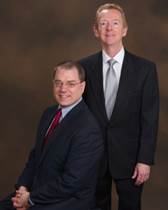For more stories like this, sign up for the PLANADVISERdash daily newsletter.
Defusing the Target-Date Time Bomb
Consider this volatile mix:
1. Auto-enrollment is proliferating,
2. Target-date funds are used heavily in auto-enrollment,
3. Target-date funds are equity-rich,
4. Many younger workers are auto-enrolled into target-date funds,
5. Gen Y is highly risk-adverse, and
6. The next severe market downturn could see droves of participants selling at the bottom and not getting back in.
Industry data varies, but it seems safe to say that more than half of plans now do some form of auto-enrollment. By far, the most common use of auto-enrollment is with new hires. Not all new hires are younger workers, but it is probably safe to assume that many of them belong to Gen Y.
About two-thirds of auto-enrollment programs utilize target-date Funds (TDFs) as the default investments. Default investments tend to be “sticky.” People who lacked the inertia to opt-out or to select their own enrollment options to begin with are unlikely to take the initiative to learn about and undertake the process of changing their investment elections—at least, not while the market is doing well.
The TDFs into which these individuals are being enrolled are equity-rich. Members of Gen Y would likely have equity allocations of 80% to 90% in the long-dated TDFs. However, much has been written about the risk-adverse nature of Gen Y. Through their formative years, the U.S. experienced a severe recession and the worst bear market since the Great Depression. Many are struggling with high education debt, and are grappling with a very challenging job market. They have neither the disposition nor the financial wherewithal to incur large losses.
In our practice, we have risk-profiled many a Millennial. Some understand that they have a very long time horizon and say they can ignore market cycles. A lot, however, profile out in the “conservative” or “moderately conservative” range.
One need look no further than the annual Dalbar studies of investor behavior to understand individuals are very prone to making emotionally driven investment decisions. Industry data about flows into and from equity funds corroborates this. During periods of severe market weakness, it’s human nature to want to “get out before it’s all gone”. Not only does that lock in the loss, but the unpleasantness of the experience might keep a younger participant from contributing to their 401(k) for many years thereafter.
So, what can we do about this?
- We can educate younger participants about the risks of emotionally-driven decision errors,
- We can stress the importance of matching their investments to their risk tolerance,
- We can remind them that long-dated TDFs are equity-rich, and consequently can be volatile,
- We can help them select less volatile investments when that’s appropriate, and
- Gen Y is known for appreciating “straight talk”. We can tee up the information and help them make great retirement saving decisions.
Jim Phillips, President of Retirement Resources, has been in the investment industry for more than 35 years, the past 18 of which have been focused in the area of qualified retirement plans. Jim worked for major national investment firms for 14 years before “going independent” in 1990. Jim is an Accredited Investment Fiduciary, has contributed to two books on 401(k), and his articles have been published in Defined Contribution Insights, PLANSPONSOR’s (b)lines and ASPPA’s 403(b) Advisor, and Jim is a RetireMentor on MarketWatch.com. His work has been acknowledged with multiple Signature Awards from the PSCA, he has been named to the 2012 and 2013 list of Top 100 Retirement Plan Advisers, by PLANADVISER Magazine, and he was a finalist in 2012 for the Morningstar/ASPPA 401(k) Leadership Award. Jim has been a frequent speaker at national conferences, including SPARK, ASPPA, AAO and the PLANSPONSOR and PLANADVISER National Conferences.
Patrick McGinn, CFA, Vice President of Retirement Resources, is a CFA charterholder and has been in the securities industry since 1993. In addition to the Chartered Financial Analyst designation, he is an Accredited Investment Fiduciary and a member of the Boston Security Analyst Society. Together with Jim, Patrick has co-authored a number of articles which have been published in industry publications on topics about managing successful 401(k) and 403(b) plans. His work has been acknowledged with multiple Signature Awards from the PSCA, and he has been named to the 2012 and 2013 list of Top 100 Retirement Plan Advisors, by PLANADVISER Magazine. He was a finalist in 2012 for the Morningstar/ASPPA 401(k) Leadership Award.
NOTE: This feature is to provide general information only, does not constitute legal advice, and cannot be used or substituted for legal or tax advice.
You Might Also Like:

How to Establish Better Decumulation Options for Future DC Plans

US Retirement Market Evolves Amid Growth, Challenges

